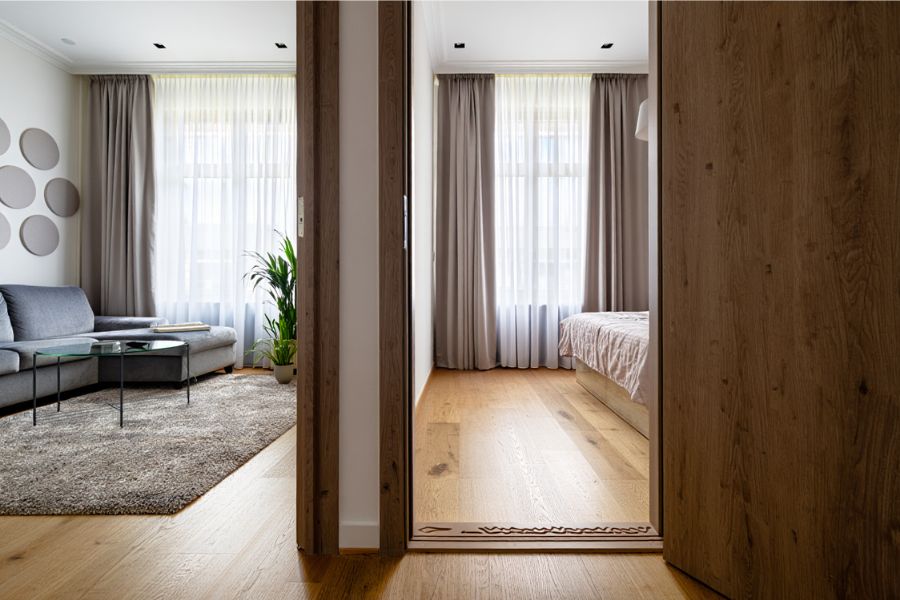How to Soundproof a Condo (Without Breaking the Rules)

Living in a condo comes with many perks, but peace and quiet isn’t always one of them. Whether it’s footsteps overhead or music through the walls, noise can quickly disrupt your comfort. That’s why learning how to soundproof a condo is essential for anyone seeking calm without violating building rules. In this guide, you’ll discover smart, effective ways to reduce noise while staying fully compliant.
Why Soundproofing Is Crucial in Condo Living
Living in a condo means sharing walls, floors, and ceilings with neighbors, which can lead to noise disturbances. Effective soundproofing is essential for maintaining peace and comfort in your home. It helps reduce stress, improves sleep quality, and fosters better relationships with those around you. Understanding the importance of soundproofing in condo living is the first step toward creating a quieter and more enjoyable space.
Common Sources of Condo Noise
Noise in condos typically comes from several sources, including:
- Footsteps and moving furniture from neighbors above or below.
- Conversations, music, and televisions in adjacent units.
- Common areas like hallways, elevators, and laundry rooms generate background noise.
- Mechanical systems such as HVAC units and plumbing create persistent sounds.
Identifying these main noise culprits helps you choose the most effective soundproofing strategies.
Noise Complaints and Condo Bylaws
Condo bylaws often include rules designed to minimize noise disturbances and protect residents’ quality of life. These regulations may specify quiet hours, restrict the use of certain appliances, or set limits on noise levels. Noise complaints can lead to warnings or fines if bylaws are violated. When learning how to soundproof a condo, it’s important to ensure that any modifications comply with condo rules and do not damage shared structures or violate association policies. Balancing effective noise reduction with adherence to bylaws is key to a successful soundproofing project.
Soundproofing Methods You Can Do Yourself
Learning how to soundproof a condo on your own can be both cost-effective and convenient. Many simple solutions can reduce noise transmission without major renovations or violating condo rules. These DIY methods focus on sealing gaps and adding soft materials that absorb sound, helping create a quieter living environment.
Door Draft Stoppers and Window Inserts
Sealing gaps around doors and windows is a simple yet effective way to reduce noise entering your condo. Door draft stoppers fit snugly at the base of doors, blocking sound leaks as well as preventing drafts, which can also improve energy efficiency. Meanwhile, window inserts are clear acrylic or glass panels installed inside existing windows, creating an extra barrier against outdoor noise like traffic or construction. Both solutions are affordable, easy to install without professional help, and reversible making them ideal for renters or condo owners who want to avoid permanent alterations.
Rugs, Curtains, and Acoustic Foam Panels
Adding soft materials to your condo interior significantly cuts down on sound reflections and noise transmission. Placing thick rugs or carpets over hard flooring can muffle footsteps and furniture sounds, especially in units with hardwood or tile floors. Heavy curtains made from dense fabrics help block noise coming through windows and also reduce echo within rooms. For enhanced soundproofing, acoustic foam panels can be strategically mounted on walls or ceilings to absorb sound waves and improve room acoustics. These panels come in various shapes and sizes, are lightweight, and don’t require invasive installation, making them a popular DIY choice for quieter condo living.
Professional Soundproofing Solutions
If you’re researching how to soundproof a condo effectively, especially in the face of persistent or structural noise, basic DIY fixes may not be enough. In such cases, professional soundproofing solutions offer more permanent and powerful noise control. Though they may involve higher costs and condo board approval, these methods can significantly improve your living experience in high-density environments.
Adding Insulation to Walls or Ceilings
One of the most effective ways to block airborne noise is by adding soundproof insulation inside walls or ceilings. Materials like mineral wool or acoustic fiberglass are specifically designed to absorb sound waves and reduce transmission between units. In many cases, this involves opening up existing drywall and installing insulation before sealing everything back up. Though more invasive and costly than surface-level solutions, this method can dramatically improve sound isolation especially in older buildings with little or no internal insulation. It’s ideal for condo owners seeking long-term noise reduction.
Floating Floors and Resilient Channels
For impact noise like footsteps, dropped items, or furniture movement floating floors and resilient channels offer highly effective solutions. A floating floor involves installing a sound-dampening underlayment beneath the flooring to reduce vibration transfer. Resilient channels, on the other hand, are metal strips mounted between drywall and framing, helping to decouple walls or ceilings and prevent sound from traveling through structural materials. These solutions often require professional installation and may need condo board approval, but they deliver a significant upgrade in acoustic comfort for serious noise problems.

Rules and Permissions: What You Can (and Can’t) Do
When planning any soundproofing project in a condo, it’s essential to understand what is allowed under your building’s rules. Condos operate under strict governance, meaning even well-intentioned upgrades may require formal approval. Knowing the limits of what you can (and can’t) do will help you avoid delays, penalties, or the need to undo your changes later.
Getting Approval from the Condo Board
Before starting any significant soundproofing work especially those involving structural changes like walls, ceilings, or flooring, you’ll likely need written approval from the condo board. Most boards require residents to submit renovation plans detailing materials, contractors, and the expected impact on surrounding units. Even some non-invasive installations, such as wall-mounted panels or underlayment beneath floors, may fall under review. Getting approval not only protects you legally but also ensures harmony with neighbors and compliance with community standards.
Bylaws About Noise and Renovation
Every condo is governed by specific bylaws that define what residents can and cannot do when it comes to noise control and unit modifications. Ignoring these rules can result in fines or required removal of unauthorized work. Key bylaws to watch for include:
- Quiet hours. Set timeframes (often evenings and weekends) during which noise must be kept to a minimum.
- Renovation time limits. Restrictions on when you can carry out construction or installation work (e.g., weekdays only, 9 a.m.–5 p.m.).
- Approved materials. Requirements for using certain sound-rated flooring or underlayment to minimize impact noise.
- Limits on wall modifications. Rules that may prevent drilling or altering shared walls or structural elements.
- Permit or contractor guidelines. Some condos require certified contractors or board-reviewed plans before work can begin.
Reviewing your building’s bylaws before making any soundproofing decisions helps you stay compliant and avoid unnecessary trouble.
FAQs
Can I soundproof a condo without renovation?
Yes. Using rugs, curtains, draft stoppers, and acoustic panels are effective, non-invasive options.
Do I need permission from the condo board to soundproof?
Only for major changes like wall insulation or flooring. Surface-level fixes usually don’t require approval.













